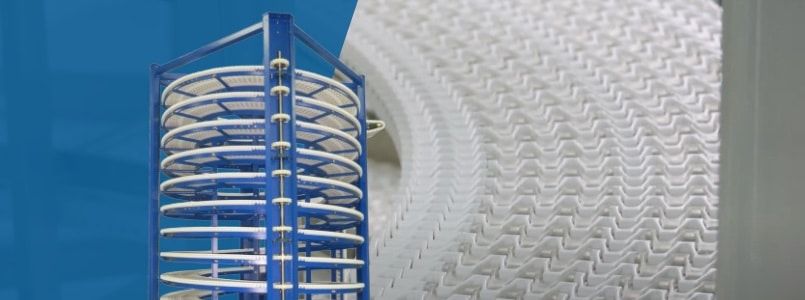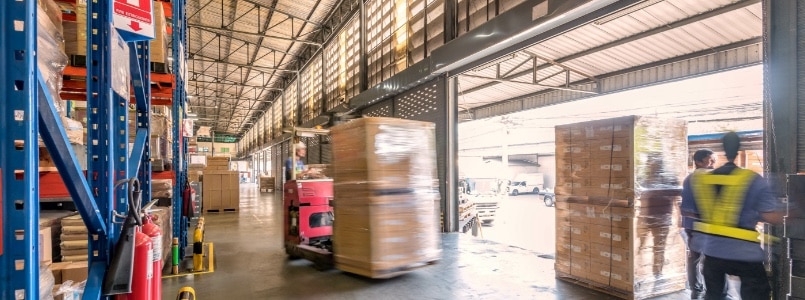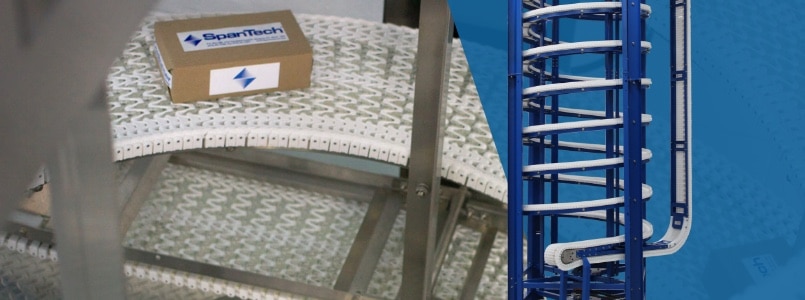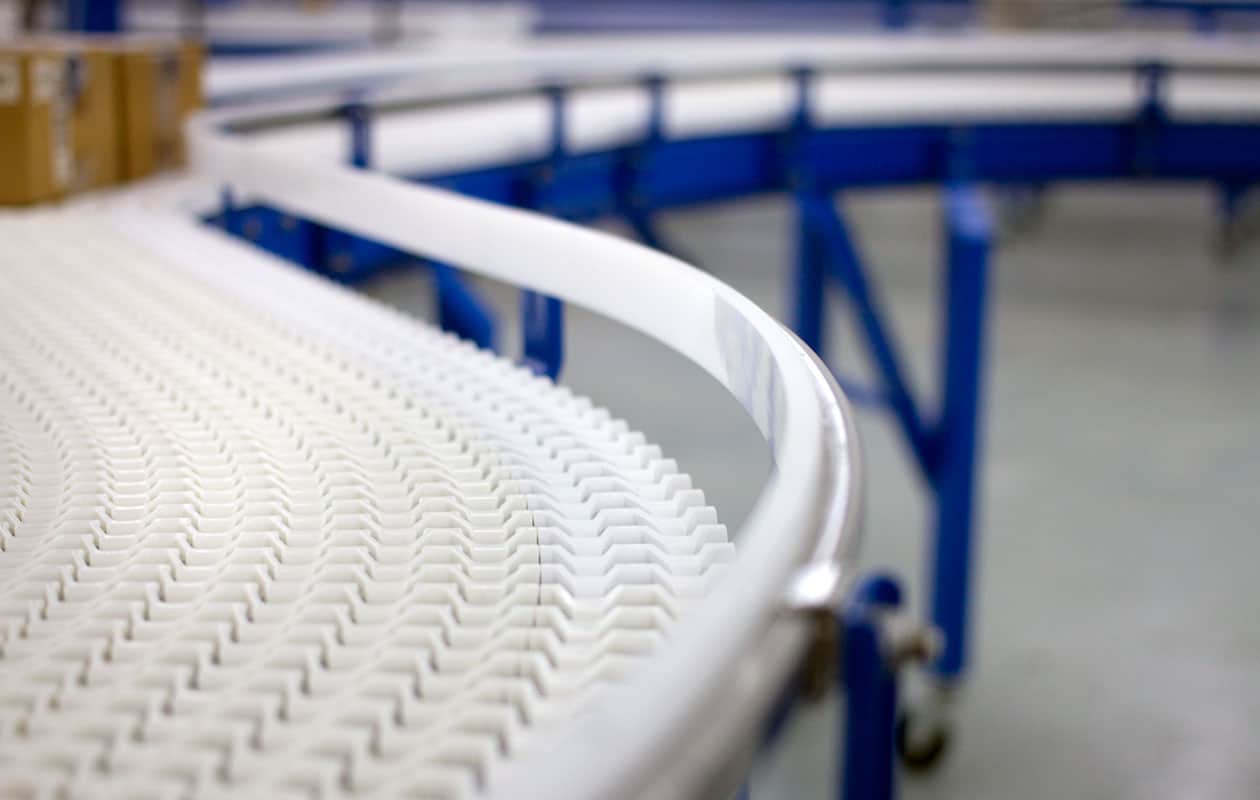
What Is Warehouse Automation?
Moving inventory into, within and out of warehouses and then delivering to customers with little-to-no human assistance is referred to as warehouse automation. Businesses that implement an automated warehouse system into their operations can neutralize labor-intensive assignments that involve manual data entry and analysis, as well as repetitive physical work.
A real-world example of automation in action is when a warehouse employee loads an autonomous mobile robot with heavy and cumbersome packages. The robot then moves the inventory from one end of the warehouse to the other, with the inventory’s final destination being the shipping zone.
During the transport of inventory, software records the movement of the supplies, keeping all records current. Consequently, the utilization of these robots helps to improve the speed, reliability, accuracy and frequency of this task.
An automated warehouse begins with a warehouse management system (WMS), data collection and inventory control. Despite having considerable upfront costs, the immediate and long-term benefits are well worth it.
By incorporating robotics and artificial intelligence (AI) integration onto the warehouse floor, you’ll reduce human error and improve overall operations. The incredible benefits and exciting future of warehouse automation know no bounds.
Automated Warehouse Systems
An automated warehouse system or automated storage and retrieval system (AS/RS) is a GTP technology that uses vehicles, carousels and cranes to efficiently move inventory throughout the warehouse to warehouse storage locations.
Conveyor Systems
One of the oldest automated warehouse technologies is conveyor systems. Simply put, conveyors move materials along assembly lines to different work stations such as sorting areas, packaging areas and shipping areas.
Voice Picking and Voice Tasking
This automated warehouse system requires employees known as pickers to use wireless headsets to communicate with taskers in order to coordinate picking tasks and movements. Voice picking infuses communication technology into a warehouse order picker’s routine.
Pick-To-Light Systems
This system utilizes barcodes and LED lights to help employees locate the necessary items to fulfill orders. Pick-to-light systems lessen human exertion by decreasing walking time and increasing productivity by helping to locate items faster.
Sortation Systems
This automated warehouse system can access the correct locations and the proper bins using different technologies that identify and separate items, directing them to pick zones, packing stations or returns processing.
Drones
Typically drones are used for inventory management. They’re equipped with barcode scanners to make inventory counts and alert the staff when items need to be restocked or are stored in the wrong location.
Collaborative Mobile Robots
These robots work side by side with humans to improve productivity and picking accuracy while guiding workers through the picking process.
Automated Distribution
Automated distribution includes all systems in place to create increased efficiency within a warehouse related to distribution.
Receiving
Mobile devices can be used to capture data from your warehouse receiving area quickly. Integrated software captures, processes and stores essential data that influences downstream and upstream automated workflows.
Returns
When dealing with returns, automated sorting systems in conjunction with equipment such as conveyors can automate the return process procedure. The system can sort products to return to stock shelves or put them away in storage areas.
Putaway
Putaway is the process of moving products from receiving to storage. Physical and digital warehouse process automation makes putaway more accurate and efficient. The automation can also help facilitate cross-docking.
Picking
Picking, when done manually, is the most expensive warehouse activity by far. Did you know that warehouse travel time accounts for as much as 50 percent of all working hours? GTP systems and autonomous mobile robots markedly increase the efficiency and speed of moving inventory.
Sorting
When you sort and consolidate warehouse inventory, it can be cumbersome, confusing and time-consuming. Fortunately, the automated sortation and AS/RS systems significantly improve quality control and inventory accuracy.
Replenishment
Automated inventory tracking triggers an automatic order request when an inventory item reaches a specific par level and flags it for approval. Automated replenishment helps prevent overstocking costs and inventory loss due to stealing or spoilage.
Packaging
The environmental ramifications for using packaging materials can be compounded when done without precision. Automated packing and cartonization systems use precise algorithms to determine the best way to package material with minimum waste.
Shipping
Automated shipping systems are comprehensively helpful with the use of printers, dimension sensors, scales, conveyors and software applications to choose available carriers. Additionally, the system estimates shipping rates and places labels onto packages for shipment.
What Are the Current Warehouse Automation Trends?
Here are the current automation trends that are beginning to surface in warehousing worldwide in an attempt to keep up with technological advances and growing demand.
Widespread Use of Robots
Robots cover their cost in about three to nine months; even small businesses with minimal budgets can invest in robots.
Mobile Robots AGV/AMR
Automated guided vehicles (AGVs) and autonomous mobile robots (AMRs) are scalable and do not need two variations to the existing floor plan or the infrastructure of the warehouse.
Drones
Useful for shipping, delivery and scanning barcodes and RFID tags efficiently, operating in hard-to-reach locations.
Cobots
Cobots are specially designed to work with humans. Currently, cobots account for less than 5 percent of the robotics market, which is poised to rise to 30.2 percent in the coming years.
Upgrade Your Automated Warehouse System with the Help of Span Tech
Keeping up in today’s competitive world requires an edge, and Span Tech is poised to help you gain that competitive edge to make your warehouse even more productive! Span Tech has a bevy of professionals ready to help you strike the coveted perfect balance of warehouse supply and demand with an innovative implementation strategy and cutting-edge automated technology. Contact us to learn more about implementing an automated warehouse system into your business today!








